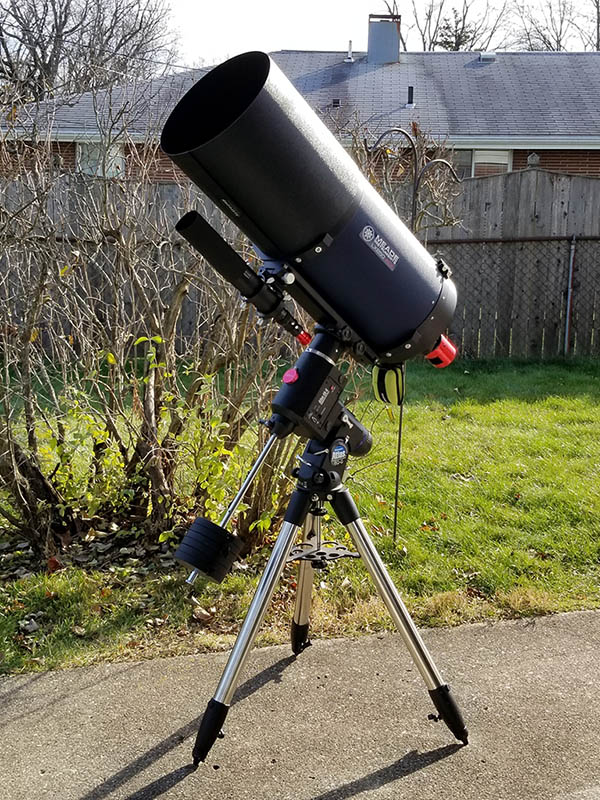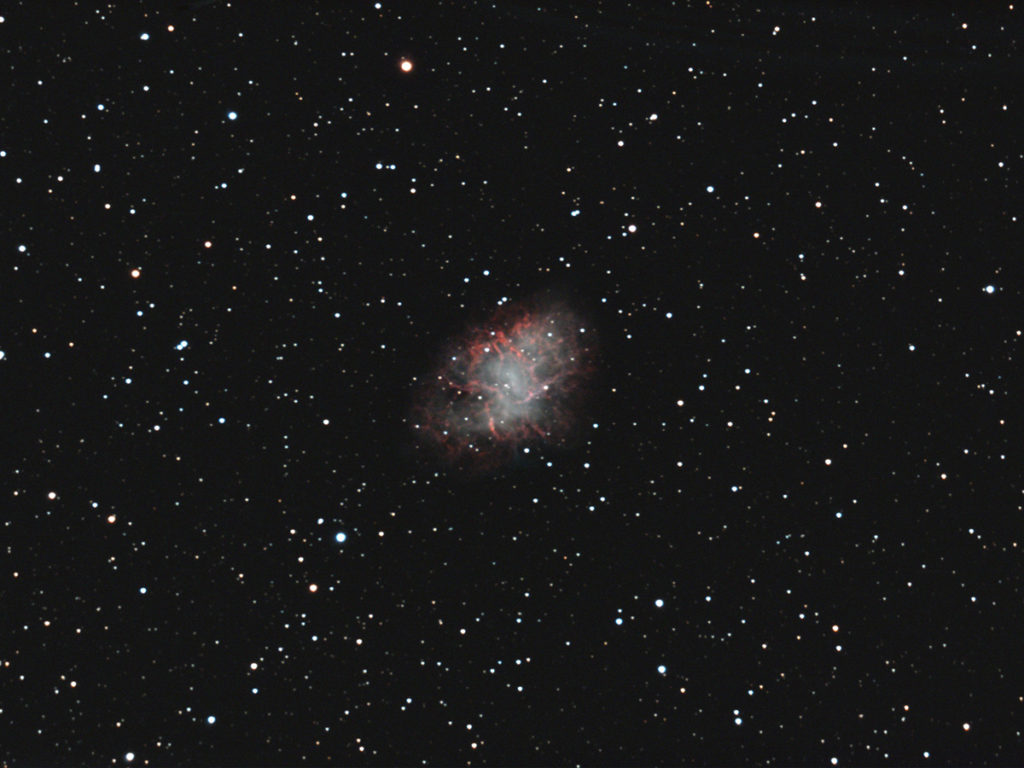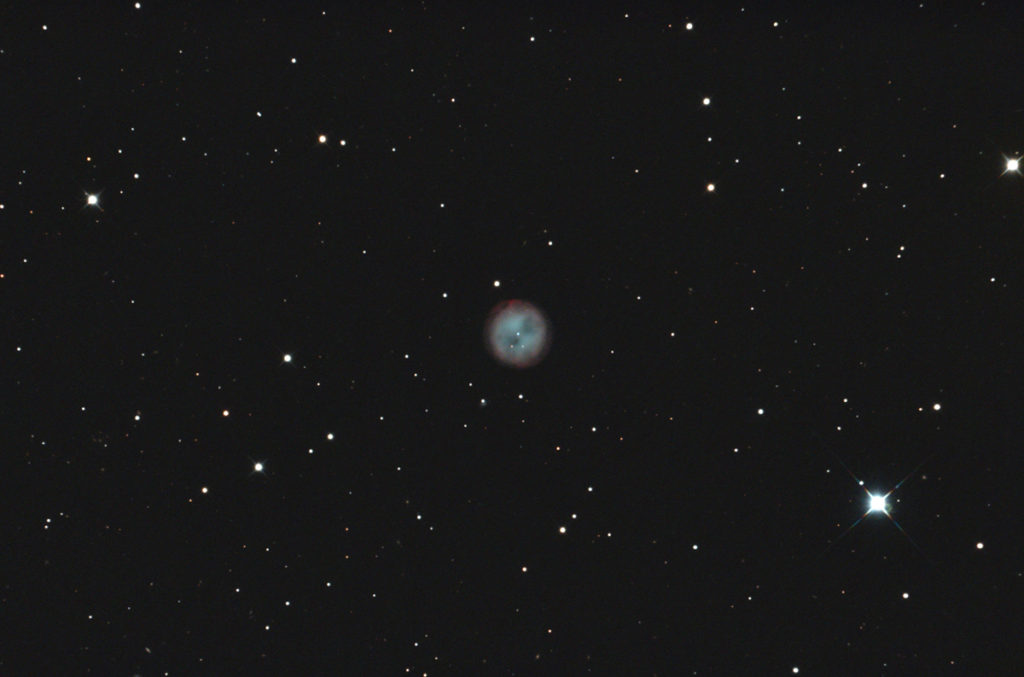

This is my new-to-me 12” f/8 Meade ACF from LX850 production after two solid nights of imaging shown with and without the dew shields installed. The weather was pretty rough and really not well suited for serious work, but I wanted to determine whether the Atlas could handle the weight of the 12”. To save weight I removed the Starlock mount from the top of the telescope and mounted a 50mm mini guider under the scope. I also used a Lepus 0.62x focal reducer to make the guiding a little more forgiving. However, I wasn’t thrilled with the initial results, so I replaced the small guider with a larger 60mm Astro-Tech guide scope and removed the focal reducer. I knew that this would shift the balance and I later found out that it was whacko off, but it still performed very well. Before starting the second night of work I reset the balance and it performed brilliantly. So, question answered; yes, the Atlas can manage the weight of the 12” if you pay close attention to the balance. The next step is to add a Reflectix insulation jacket to slow the response of the telescope to temperature changes during the night. This should reduce how fast the focus shifts as the telescope cools and shrinks. The devil is always in the details!








Recent Comments